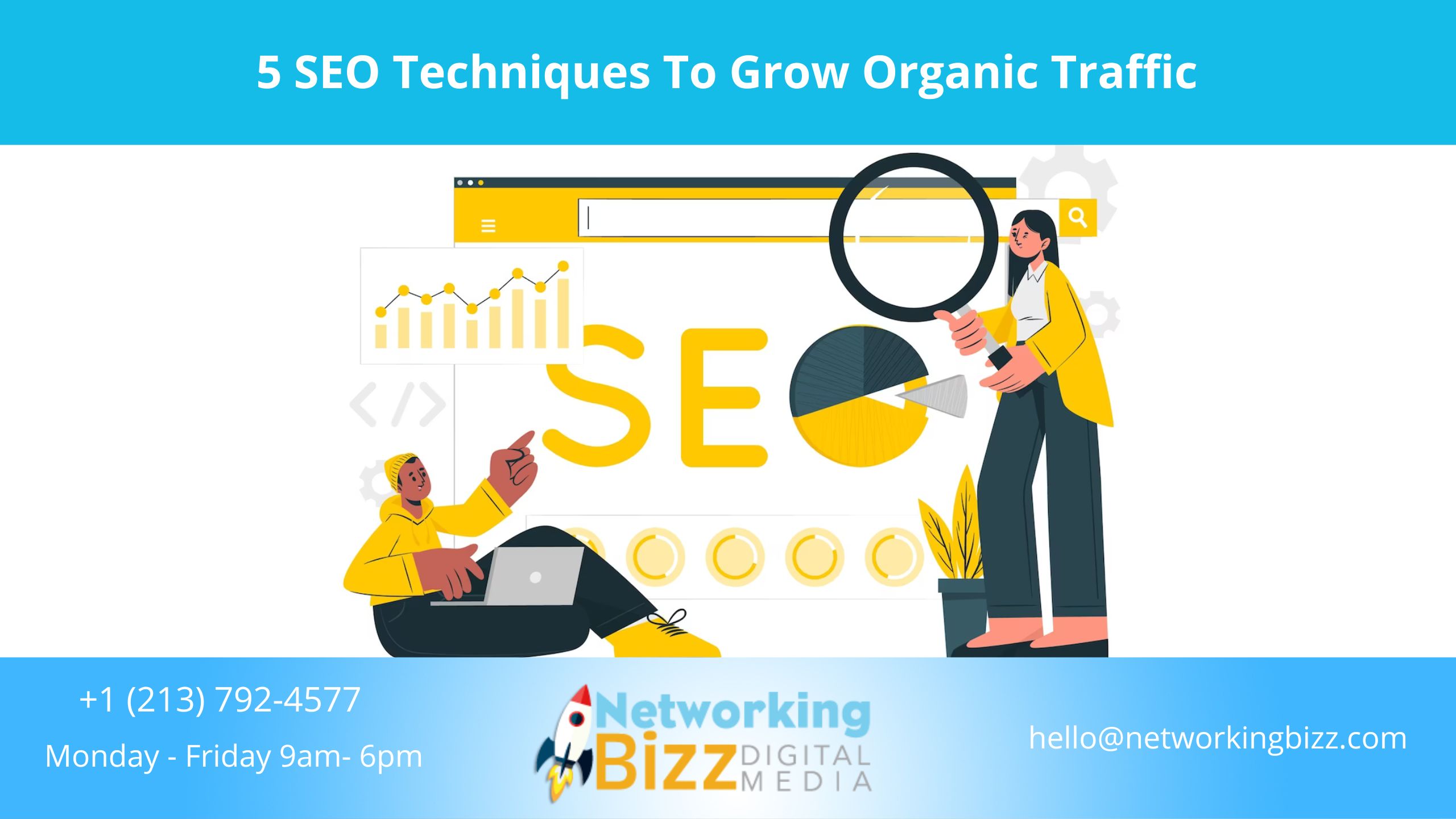By optimizing your content for search engines, you increase your chance of ranking higher in the search results.
Having an online presence is no longer an option; it’s a necessity.
From small businesses to huge multinational companies, online visibility has a big impact on the success of a business.
This is why having a search engine optimization (SEO) strategy is paramount for anyone who wants to grow their business online.
What Is SEO, And Why Is It Important?
SEO stands for search engine optimization, and it’s the best way to get more eyes on your website, content, and brand.
By optimizing your content for search engines, you increase your chance of ranking higher in the search results.
Organic search is so effective because the people who come across your content are actively searching for it. This usually means better quality leads and, therefore, more engagement and conversions.
SEO is a cost-effective way to boost your visibility and has huge long-term potential.
Unlike paid advertising, where your reach typically nosedives the second you stop paying, a search engine-optimized piece of content can continue to get traffic months (or even years) after its original creation.
It takes a bigger upfront effort and may take a while to see the results, but it is definitely worth the wait.
5 Beginner-Friendly SEO Strategy Techniques
Even though SEO is a strategy to get the search engine algorithm to rank your content higher, your focus should always be on your audience and providing valuable content!
Gone are the days of keyword stuffing and other black hat SEO techniques.
Bad SEO practices will backfire, so always remember: your content should be written for humans and optimized for search engines, not vice versa!
Focusing on SEO is a great way to increase organic traffic to your website.
Let’s dive deeper into some basic techniques you can use today to get started with your SEO strategy!
1. Focus On The “People Also Ask” Section
Google’s “People Also Ask” section is a goldmine for your SEO strategy.
When you search for something, Google will often suggest what other related topics may be helpful.
This is a great, free way to do keyword research and write about things people are interested in.
By addressing these questions in your content, you are giving users the answers they’re looking for and increasing your chances of appearing in this section.
Great for visibility and great for credibility. Win-win.
Another resource to find out what questions your audience has about certain topics is Answer the Public.
2. Study Your Competition
Looking at what your competitors are doing is a great way to gather insights that will influence your SEO strategy.
Identify the keywords they are ranking for and study their backlink profile – you’ll need an SEO tool such as Semrush or Diib for this.
Before investing in an SEO tool, you can sign up for a free trial, gather the information you need, and determine if this is a tool you’ll want to use again in the future.
Another way to do this is by analyzing your competitors’ content. Review what it is that they’re writing about and what response they are getting from their audience.
Don’t mimic their strategy, but evaluate what appears to be working for them and use that knowledge to make decisions about your own strategy.
If you want to dive deeper into this analysis, check out this guide.
3. Internal Links And Backlinks
Links are really helpful for SEO, as they provide further information for your readers. Search engines see that as a more helpful piece of content.
Internal linking also helps search engines understand the relationship between different pages/posts on your website. It’ll also encourage readers to check out more of your content.
You can also link to other external resources if you believe they’re helpful for your readers or help you prove your point. You should also turn any mention of a brand into a link.
Backlinks, on the other hand, are an important ranking factor.
Backlinks are links from other websites to yours. Even though quantity helps here, quality is even more important.
When high-quality websites link back to your site, it tells the algorithm that your content is accurate and trustworthy.
On the other hand, having suspicious sites linking to yours can hurt your reputation, making it harder to rank on top.
4. Refresh Outdated Content
Your SEO content will remain effective in the long term, as long as it remains relevant.
That’s why it’s so important to frequently take a look at older content that’s been performing well and update it if necessary.
It may not always be necessary, but think: is there anything else you can add to make this content even more valuable?
Or is there anything in there that’s no longer true or relevant? Regularly updating your content is a great practice for SEO.
Google tends to favor up-to-date and relevant content. This can also attract new backlinks, which should be part of your SEO strategy.
5. Core Web Vitals
Another important factor of SEO is your website’s Core Web Vitals. They are part of the ranking factors search engines use and should not be overlooked.
A Core Web Vitals report is gathered through real user data, and those factors are important to an overall user experience. It measures:
- Largest Content Paint (LCP) – How much time it takes for the main content on your page to fully load (aim for 2.5 seconds or less).
- First Input Delay (FID) – How much time it takes for users to be able to actually interact with your content (aim for 100 milliseconds or less).
- Cumulative Layout Shift (CLS) – How much your content moves around on the page until it sets in the right place (aim for 0.1 or less).
This can be a bit too technical, but overall, it’s about the user’s experience when they first come into contact with your website.
A good user experience is an important part of your SEO strategy, so you should take the time to make sure your website is healthy.
Some other factors you should pay attention to:
- Page speed – Use tools like Google PageSpeed Insights or GTmetrix to analyze your site’s speed and get recommendations for improvement.
- Mobile responsiveness – Most people use mobile phones to browse, so make sure your website looks good on mobile and is functional.
- Image optimization – This is a common mistake that causes a big problem – heavy images slow down your website, so make sure you optimize any media before uploading it to the site.
Content may be king when it comes to SEO, but if people leave before they get to see your content, it doesn’t really matter how good it is.
Key Takeaways: Powering Your Brand With Organic SEO
To recap, these five points will help you grow your organic SEO:
- Focus on the “People Also Ask” section on Google.
- Study your competition.
- Use internal links and backlinks.
- Refresh outdated content.
- Pay attention to your core web vitals and user experience.
Remember, these strategies work hand-in-hand, and implementing them together can often lead to better results!
Working on your organic traffic is a great way to get more visibility and grow your brand.
And a human-centered marketing approach to your SEO content strategy will not only result in more organic traffic to your website but will get more eyes on your content in general.
It’s a great addition to your organic marketing efforts.


